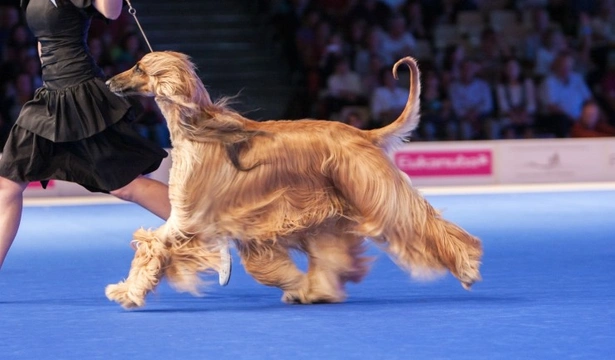
What can you do to improve the quality of your dog’s coat?
Dog fur comes in all manner of lengths, colours and textures – much like human hair – and even dogs of the same breed which should theoretically all be fairly uniform can have very different types of coat, and some dogs will of course have a better quality of coat than others.
If your dog has short, fine fur, there isn’t anything you can do to give them a coat full of long flowing locks like the Afghan hound, because they simply don’t have the right type of coat growth and texture – but regardless of the natural state of your dog’s coat and the type of coat that they have, there are several things that you can do that can potentially improve the texture and quality of your dog’s coat.
In this article, we will look at some of the steps that you should take to ensure that your dog’s skin and coat are in optimum condition, and some of the things that you can do to improve the quality of your dog’s coat. Read on to learn more.
Feed an appropriate good quality diet
First things first, a dog that is not fed a good quality complete diet or a diet that is appropriate for their age and lifestyle won’t be at their best in any way – and what your dog eats has a direct and tangible effect on the quality of their coat.
If your dog’s coat is thin, dull, brittle or otherwise not in great condition, the first thing you might want to consider doing is changing them over to a better diet – you may see an improvement within just a few weeks.
Brush and groom your dog regularly
Even if your dog has short, fine fur, brushing and grooming them a few times a week will help to improve their coats – and for dogs with thick, long or dense hair, daily brushing is likely to be a must to keep them looking and feeling good.
Brushing and grooming does more than just remove matting and knots that can cause problems and make your dog uncomfortable – it also helps to distribute the coat’s natural oils from the roots to the tips of the hair, and stimulates the skin and so, hair growth. However, to make brushing and grooming count, you need to work right the way down to the roots of the hair so that you can see the skin, and not just skim over the top layers!
Avoid clipping and trimming at home
Whilst a certain style or type of clip falls within the breed standard for many dogs and won’t impact upon your dog’s coat growth and quality, leave clipping and trimming your dog’s fur in the hands of the professionals, and don’t be tempted to have a go at home if you don’t know what you’re doing!
Clipping your dog’s fur in the wrong way, or clipping them off uniformly to keep them cool in the summer can change the way that your dog’s coat grows back, leading to uneven regrowth, and changes in texture.
This is what dog groomers refer to as a “blown coat” in this context (as opposed to the use of the same term to mean a heavy seasonal shed) and once this has occurred, your dog’s fur likely won’t grow in its original way again.
Keep your dog free from parasites
Use a good quality flea and tick treatment on your dog to keep their coats free from parasites, as fleas and other irritations can not only bother your dog, but irritate the skin and make the coat dull, flat and unhealthy.
Ask your vet to recommend an appropriate antiparasitic treatment for your dog, and if you find that a certain spot-on treatment is having an effect on the fur in the area where it is applied, talk to your vet about this and seek a replacement product.
Bathing the right way
Dogs need to be bathed now and then to get them thoroughly clean and get rid of smells, but overbathing your dog or using the wrong type of products when bathing your dog can make their coats look dull and poor. Don’t bath your dog too often or when they don’t really need it, and use neutral, gentle products that won’t strip the skin of its natural oils.
You might want to use a dog-safe coat conditioner as part of bathing too, and remember to always rinse all products fully and thoroughly from your dog’s coat, as this residue can not only make the coat look dull but also irritate the skin or clog the pores.
Ask your vet about dietary supplements
A dog fed an appropriate complete diet shouldn’t need any supplements to be added to it, but if you are struggling with a poor-quality coat, you might want to talk to your vet about supplements you can use to help to improve it.
Don’t add anything to your dog’s diet or give even seemingly innocent-seeming products to your dog without first checking with your vet though!
Take your dog to a professional groomer
Finally, it is very worthwhile to talk to a professional dog groomer about caring for your dog’s coat, as experienced groomers tackle a wide range of problems and know the coats of different types of dogs very well, and will know the best approach to take to improving the appearance and condition of your dog too.
Additionally, having one’s hair cut or styled at a professional salon almost always produces better results than we can achieve ourselves at home, and the same is true when it comes to dogs and groomers – you might be surprised what a good dog groomer can achieve with your dog’s own coat if you ask them about it!



